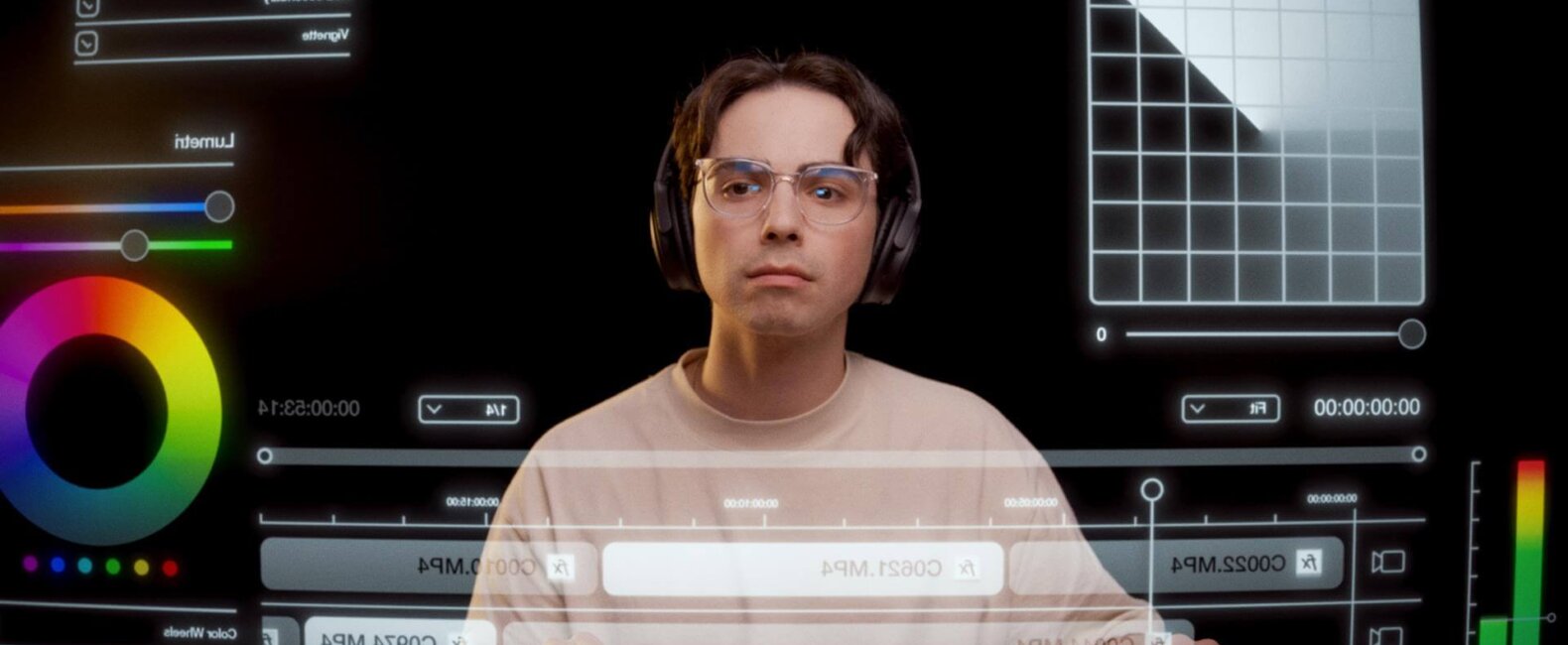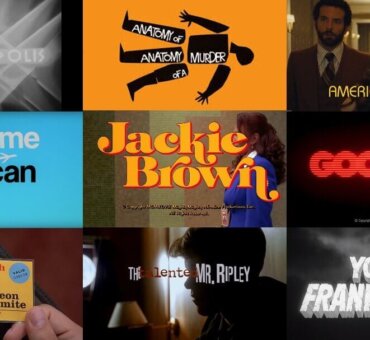The year is 1999 and you are heading to the theater to see “Meet Joe Black.” You might be excited to see the work of up-and-coming cinematographer Emmanuel Lubezki, or you’re just there to see Brad Pitt in his latest role. Whatever brings you to the theater, you are sure to find movie trailers.
Movie trailers are often an audience’s first touchpoint with a film and the main way it is marketed. Without it, audiences are left without any way of knowing what to expect from a film.
But what exactly is the difference between a teaser and a full trailer? A typical film will reveal a teaser several months before the film is set to be released. The teaser sets the tone and informs how marketing will take shape for the next several months.
Take, for example, this year’s winner of the World Trailer Awards, the teaser trailer for “Black Panther: Wakanda Forever.” This teaser let Marvel Studios set up story beats and get audiences excited for the film without revealing too much. Audiences get a glimpse of the new Black Panther, but no details about who might be wearing the suit.
Now, compare the teaser trailer for “Black Panther: Wakanda Forever” with this longer, more detailed trailer. In it, we hear more spoken dialogue and get more insight into the plot. For decades, this method of release has served as a successful marketing tactic.
Notably, the original teaser for Jurassic Park (1993) featured no footage from the film at all, instead opting to simply tease the concept of the film and nothing else. And in 2001, Michael Bay’s “Pearl Harbor” released a stunning teaser trailer with no plot details, focusing only on tone, before later revealing a full trailer for more specifics about the characters and story.
Editing a Trailer
Because a trailer is considered a piece of art as much as a film, it’s integral that trailer editors learn important skills to craft a trailer effectively.
Trailers are edited differently than other content, especially films. A trailer is mostly a montage, with disparate components of the film being mashed together to suggest something else is happening entirely.
For instance, in this trailer for “Top Gun Maverick” starting around 1:54, we hear some dialogue that says “Somebody is not coming back from this” followed by shots of aircraft dodging missiles, followed by shots of a funeral. The editor here is trying to sell the idea that the mission is dangerous and will result in the death of one of the main characters. However, in the actual edit of the film (spoilers if you have not yet seen this movie), the funeral is for the character played by Val Kilmer, who dies from a battle with cancer. None of the pilots in the climactic finale die in battle, and everyone returns home safely.
Not only does the editor of a trailer need to make tough decisions about how to frame the story and the marketing, but they also need to be heavily skilled at working with music and sound effects.
When you listen to a trailer, you hear how the sound design compliments the music, with the music sometimes acting in tandem with the sound effects, and all of it lined up with the picture. Take, for example, this trailer for the upcoming “Guardians of the Galaxy: Volume 3.”
The very opening of the trailer features one example of the type of music and sound effects editing that goes into making a trailer compelling and exciting. The beats of the music line up with the gunshots, all of which are amplified with another layer of sound design. The same type of effect is also found at 1:17 in this trailer, where gunshots fire out in perfect cadence with the tempo of the music. Trailer editors are skilled at retiming footage, upcutting music, and finding the right sound FX to accentuate a moment so that every component feels like it belongs together seamlessly.
Tips for editing your own trailer
Trailers are complex to edit, but they are not impossible! If you have your own short or feature film project, try your hand at editing the trailer.
Think about the length
Most trailers for feature-length films run between 90 seconds and 150 seconds in length. If an average feature-length film tends to be roughly 2 hours, then a trailer is about 2% the length of the movie.
You don’t want to plan your trailer to be much longer than that. Knowing exactly how long you want your trailer to be from the start is a good way to begin planning what you can include in it.
The same rule applies to short films. If your short film is only 10 minutes, then you wouldn’t want to create a trailer that was 2 and a half minutes long. Rather, plan to make a trailer that is the right size for the film you have. A great trailer just needs to get the audience excited to see the movie, and you don’t always need 2 and a half minutes to do that.
Research
Before you dive into creating your own trailer, research similar trailers to the film you are working with. Using references can be a big help in getting started.
Not only can you take a reference trailer and lay it out on your editing timeline, but you can precisely lay out the different acts and story beats in your timeline to help you construct something impactful.
Tone and Feel
These play an important part in any trailer. Do you want something dark and moody, or do you want something quick-paced and with plenty of comedic timing?
Knowing the tone helps you start to pull the appropriate footage, sound effects, and music. Musicbed has a wide range of music cues to choose from and is a great way to start designing the tone of your trailer.
Picking your music is a great way to start the process, as you’ll need cues that work for the tone you are trying to achieve, along with cues that will help drive the pace of your trailer.
Storyboarding
Any trailer begins with a basic timeline assembly of clips or a storyboard. It’s an easy way to see the story unfold without any frills and without the challenge of timing everything perfectly.
Begin the process by identifying which scenes, shots, and lines of dialogue you would plan to include in the trailer, then lay out your footage into groups. The flow of the trailer often begins in this step of the process. You can group all of the footage that belongs in the first act of the trailer together, or you can group them based on emotion and feel like the trailer for Knives Out (2019), sort of like this:
- Shots of characters looking up suspiciously
- Shots of knives or other weapons
- Shots of anyone appearing shocked or reacting with shock
While this method doesn’t tell you much about the plot, it certainly communicates a feeling.
Use the best
As you begin to pull the necessary footage to edit your trailer, think about the scenes in your film that are the most marketable. This means you want to focus on the biggest set pieces, the most notable actors, and the funniest and smartest lines of dialogue.
Avoid letting scenes play out for too long, and instead, focus on one or two good lines from each scene that gives the audience an idea of what will be happening.
When pulling shots, focus on the ones that evoke a sense of wonder and mystery. Any time you can give your audience clues as to what will happen in the movie instead of giving away the plot is a win. Keeping audiences guessing is part of the fun of film marketing.
Finding the right music
Any truly memorable trailer uses music cues that stick in your mind and keep you wanting to watch the trailer over and over again. It communicates a feeling and helps bring the audience into the story, which is why picking the song is one of the most important—and daunting—aspects of crafting an excellent trailer.
A great place to find and source music cues for your trailer is at Musicbed. Remember that trailers are a montage of sight and sound, so don’t just stick to one music cue. It may take your editorial skills to build a musical soundscape for your trailer that weaves multiple music cues together with sound effects to deliver one amazing result.
You don’t have to solely rely on the rhythm of the music you’ve chosen, but you can actually compose entirely new music with music stems. Sometimes the drums from one song can blend seamlessly into the rhythm of another, allowing you to jump between cues as needed to create the pace of your trailer.
When building a trailer, laying out your music cues first is a helpful way of setting the pace for your edit before you begin to drop in the footage. Allowing the music to drive the rhythm and pace of edit choices is a good way to stay on target for the tone and feel you are working to establish.
Tell micro-stories
Trailers are all about the montage. Specifically the idea of cause and effect. As we saw with the Top Gun: Maverick trailer, a mini story happens where one character exclaims “Someone is not coming back from this” followed by several shots of a funeral. Cause and effect.
We believe that Tom Cruise is talking about one of the pilots he is training, and then we believe that the funeral we are seeing is for one of those very pilots.
Another example of these mini-stories is earlier on in the Top Gun: Maverick trailer. We hear Jon Hamm’s character say “He believes you have something left to offer the Navy, what that is I can’t imagine.” Following that line of dialogue, we see several shots of Tom Cruise’s character seemingly recklessly flying a jet.
Your trailer should always be telling small stories within the confines of the larger trailer but in the style of a montage.
Keep in mind that a trailer is often edited quickly, with shots lasting less than one second in some cases. Make sure that the shots you choose to go back-to-back connect small stories together and have a clear focal point for the audience. In the case of Top Gun: Maverick, the main focal point of this small story is the character of Maverick who we see being scolded, then we see flying a jet. Our focal point here is Maverick, and audiences seeing the trailer will be able to follow along with the story despite the edits happening quickly.
You can create a compelling trailer for any film if you follow these tips. Plan your story in advance, decide on a tone and feel, and make sure to keep your story focused so audiences aren’t trying to decipher the imagery in your film. Most importantly, make sure it sells your movie with the best footage. This is your film’s first impression with audiences.
Featured image by KAL VISUALS.






